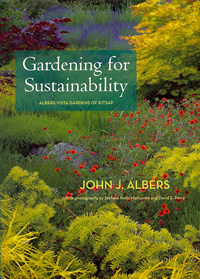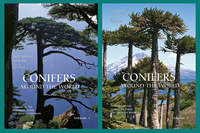 It is a nice balance that a publication of equal stature to the RHS encyclopedia on cultivated conifers has been recently published on conifers in the wild. “Conifers around the World” authors Zsolt Debreczy and István Rácz have been working together since 1975. The predecessor to this current title was published in 2000 in their native Hungarian; Kathy Musial of the Huntington Botanical Gardens provides valuable editing skills to this much expanded English edition.
It is a nice balance that a publication of equal stature to the RHS encyclopedia on cultivated conifers has been recently published on conifers in the wild. “Conifers around the World” authors Zsolt Debreczy and István Rácz have been working together since 1975. The predecessor to this current title was published in 2000 in their native Hungarian; Kathy Musial of the Huntington Botanical Gardens provides valuable editing skills to this much expanded English edition.
The result is massive (again, in two volumes), but very manageable. The authors’ intention is to “present photographs of conifers in their natural habitats in a consistent format.” These larger images are breathtaking, and are supplemented with close-up photos of cones, leaves, and any distinguishing features. The accompanying text is concise but unlike some botanical descriptions is very readable and reflects the authors’ sensitivity to conservation, local culture and ethnobotany.
The focus is on temperate species, and the layout is by broad geographical areas with a detailed description of the geological, vegetative, climatic and human history of each. Maps are used liberally to show topography, sites of major conifer forests, floristic provinces, and the ranges of species. The extensive introduction is a joy to read despite covering some pretty dense subjects, including taxonomy, conifer identification, morphology (lots of drawings help the reader with these), and the history of the earth’s climate and other factors that have impacted the distribution of conifers we find today.
The appendix is also fun, with various essays that didn’t quite fit elsewhere, and a “bark gallery” giving eye level close-ups. The Pacific Northwest is clearly dear to these Europeans, as the two photos that accompany the Preface are from Washington State, including the authors’ portrait standing in front of a giant Sitka spruce (Picea sitchensis) in Olympic National Park. On the inside of the back cover of Volume 2 is the “Sell the Land?” speech attributed to Chief Sealth; a suitable closure to this very rigorous but also very passionate and personal publication.
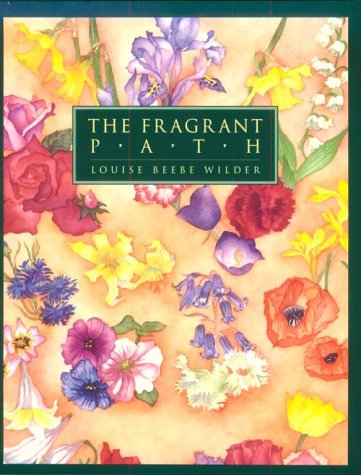 One of my favorite books on fragrance is The Fragrant Path by Louise Beebe Wilder. Published in 1932, and re-issued in 1990 (the Miller Library has both editions), I don’t think there is a garden fragrance book today that’s any better.
One of my favorite books on fragrance is The Fragrant Path by Louise Beebe Wilder. Published in 1932, and re-issued in 1990 (the Miller Library has both editions), I don’t think there is a garden fragrance book today that’s any better.![[A Handbook of the World's Conifers] cover](https://depts.washington.edu/hortlib/graphix/HandbookWorldsConifers.jpg)
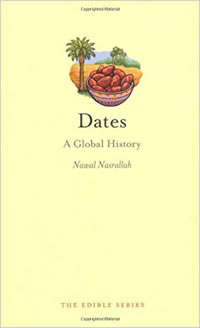 Dates: A Global History is another title in the Edible series from Reaktion Books. An unusual aspect of the fruit (technically a berry) of the date palm tree is that it may be harvested at three different stages of ripeness–the ultrasweet dates one usually finds for sale in groceries are at the final stage, when they have sun-dried on the tree and the skin has begun to wrinkle and darken. Dates have been used as a food staple for centuries. Once called ‘bread of the desert’ and ‘cake for the poor,’ dates are still considered of vital importance in combating world hunger.
Dates: A Global History is another title in the Edible series from Reaktion Books. An unusual aspect of the fruit (technically a berry) of the date palm tree is that it may be harvested at three different stages of ripeness–the ultrasweet dates one usually finds for sale in groceries are at the final stage, when they have sun-dried on the tree and the skin has begun to wrinkle and darken. Dates have been used as a food staple for centuries. Once called ‘bread of the desert’ and ‘cake for the poor,’ dates are still considered of vital importance in combating world hunger.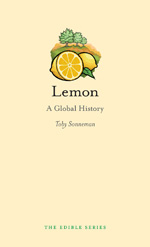 I’ve always wondered about the warty etrog (citron, or Citrus medica) used as part of the Jewish observance of Sukkot (etrog represents one of The Four Species mentioned in the Biblical description of this festival; the others are palm, myrtle, and willow): what purpose did the fruit serve beyond the ritual, and how was this odd-looking fruit related to lemon? The answers to these and many other citrus-related questions may be found in Toby Sonneman’s
I’ve always wondered about the warty etrog (citron, or Citrus medica) used as part of the Jewish observance of Sukkot (etrog represents one of The Four Species mentioned in the Biblical description of this festival; the others are palm, myrtle, and willow): what purpose did the fruit serve beyond the ritual, and how was this odd-looking fruit related to lemon? The answers to these and many other citrus-related questions may be found in Toby Sonneman’s  Part biography, part garden photo essay, and part ventriloquist’s act, Marta McDowell’s Beatrix Potter’s Gardening Life (Timber Press, 2013) provides a window into Potter’s world. If you have read her children’s books, you will have a lasting impression of the charming adventures of rabbits, hedgehogs, kittens, and ducks but you may not think of Beatrix Potter as a botanical illustrator. I was surprised to discover that the highly accomplished sketch of foxglove and periwinkle on page 27 was made when she was only ten. The best feature of this book is the gathering together of selected drawings and watercolors of plants, fungi, and landscapes. Potter’s natural history illustrations (particularly of mushrooms) are featured in Ambleside’s
Part biography, part garden photo essay, and part ventriloquist’s act, Marta McDowell’s Beatrix Potter’s Gardening Life (Timber Press, 2013) provides a window into Potter’s world. If you have read her children’s books, you will have a lasting impression of the charming adventures of rabbits, hedgehogs, kittens, and ducks but you may not think of Beatrix Potter as a botanical illustrator. I was surprised to discover that the highly accomplished sketch of foxglove and periwinkle on page 27 was made when she was only ten. The best feature of this book is the gathering together of selected drawings and watercolors of plants, fungi, and landscapes. Potter’s natural history illustrations (particularly of mushrooms) are featured in Ambleside’s  Audrey Lieberworth enjoyed an active, outdoor childhood in Seattle, but not until she left for Scripps College did she realize “…just how much the connections I made with these [Seattle] landscapes as a child had shaped the person I had become.” The result of this revelation is her senior thesis, “Seattle’s Orchards: A Historic Legacy Meets Modern Sustainability.”
Audrey Lieberworth enjoyed an active, outdoor childhood in Seattle, but not until she left for Scripps College did she realize “…just how much the connections I made with these [Seattle] landscapes as a child had shaped the person I had become.” The result of this revelation is her senior thesis, “Seattle’s Orchards: A Historic Legacy Meets Modern Sustainability.”
